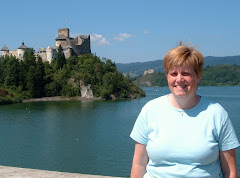Most of you know that I have been working on a doctorate. A part of the work I am doing requires me to write a blog post every week on a leadership book we have read. So, to better include you on my journey I decided to start posting them here as well. Below is this week's post.
I moved into my place in Sequim nearly a year ago, and
with moving comes the seemingly endless unpacking. For me, every box was an
adventure of new or a rediscovery of a different life. Some boxes revealed my
life before I had a passport, while others were filled with treasures from
previous generations. One of the most revealing discoveries I found was in the numerous
boxes of old documents. You know the ones, those that you have to keep until
the appointed time when they can be shredded. There among the decades of papers
doomed for destruction I found notes, old journals, and random thoughts that
echoed the themes running through my NPO. At that moment I had no words to explain
the connections.[1]
Could this be an example of my own
scientific tacit knowledge discovery journey? [2] Have the professional and ministerial
decisions been a “compelling…sequence of choices” meant to “transform”[3] me into the person who can
reveal the truths hidden within my NPO?[4] Could it be that all the
pressure, struggle, perseverance required in this program was the crucible[5] used to produce the
actualization necessary for me to find the words to my own tacit knowledge?[6]
The Tacit Dimension[7] by
Michael Polanyi, the younger brother of Karl Polanyi and the author of The
Great Transformation: The Political and Economic Origins of Our Time. [8]
The Austrian Hungarian Jewish brothers inherited their mother’s curiosity,
debate, and interest in political issues that influence the culture.[9] Although, their father
died while Karl and Michael were in their teens, they both impacted by his “stalwart
moral integrity.”[10] Michael’s perceptive
developed out of his experience as a physician,[11] and as an esteemed physical
chemist.[12]
Michael published The Tacit Dimension[13]
as “a response to Soviet instrumentalization of science,”[14] he had observed during
his 1935 visit to Moscow. Michael believed this to be a compromise of free
scientific thought and ultimately the destruction of any new discoveries.[15] Michael’s support of free
thought posed to be the philosophical divide with Karl’s appreciation of socialisms
economic constructs.[16] This divide created the
space for the brothers to develop their own differentiated philosophical view.[17] I cannot help but wonder
if this contributed to the brother’s ability provide us with the opposing views
necessary to see more clearly? It is as if, each one’s scientific pursuit of
their own tacit “hidden reality” reveal for us “future discoveries.”[18]
In The Tacit Dimension, Polanyi examines the
social, scientific, economic, and philosophic thought into how people know more
than they are able to express while having a need to uncover hidden truths. The
book comprises lectures, within the three chapters of the book, take a systematic
approach through varies social scientific examples. Polanyi, emphasizes the
need for freedom of thought to create the environment for creative and new
discoveries.[19]
These new discoveries in science and elsewhere are to undergo peer review, free
from government of interference.[20]
My reflection on this book leaves me with this
spiritual thought: God created each person with the seeds necessary to address
specific issues. Those seeds are at the very core of a person’s being, tacit knowledge.
That individual is driven by “a need” for “a purpose which bears…eternity.”[21]
“…He
has planted eternity in the human heart, but even so, people cannot see the
whole
scope of God’s work from beginning to end.” Ecclesiastes 3:11[22]
[1] Michael Polanyi and Amartya Sen, The
Tacit Dimension (Chicago; London: University of Chicago Press, 2009), 4.
[2] Ibid., 79.
[3] Ibid., 80.
[4] Polanyi and Sen, The Tacit Dimension.
[5] Tod E. Bolsinger, Tempered Resilience:
How Leaders Are Formed in the Crucible of Change (Downers Grove, IL:
InterVarsity Press, 2020).
[6] Polanyi and Sen, The Tacit Dimension,
89.
[7] Polanyi and Sen, The Tacit Dimension.
[8] Karl Polanyi, The Great
Transformation: The Political and Economic Origins of Our Time, 2nd Beacon
Paperback ed (Boston, MA: Beacon Press, 2001).
[9] Walter Gulick, “Michael and Karl Polanyi:
Conflict and Convergence,” Political Science Reviewer 37 (2008): 14.
[10] Ibid.
[11] Ibid., 17.
[12] Helicon, “Polanyi, Michael (1891-1976),”
in The Hutchinson Dictionary of Scientific Biography, n.d.,
https://search-credoreference-com.georgefox.idm.oclc.org/content/entry/hdsb/polanyi_michael_1891_1976/0.
[13] Polanyi and Sen, The Tacit Dimension.
[14] Park Doing, “Review: The Tacit Dimension
by Michael Polanyi and Tacit and Explicit Knowledge by Harry Collins,” Social
Studies of Science 41, no. 2 (April 2011): 301, https://
www.jstor.org/stable/41301906.
[15] Polanyi and Sen, The Tacit Dimension,
3.
[16] Gulick, “Michael and Karl Polanyi:
Conflict and Convergence,” 21.
[17] Ibid.
[18] Polanyi and Sen, The Tacit Dimension,
82.
[19] Ibid., 77.
[20] Ibid., 83.
[21] Ibid., 92.
[22] Tyndale House Publishers, Holy Bible:
New Living Translation. (Carol Stream, Ill.: Tyndale House Publishers,
2004), 539.




No comments:
Post a Comment